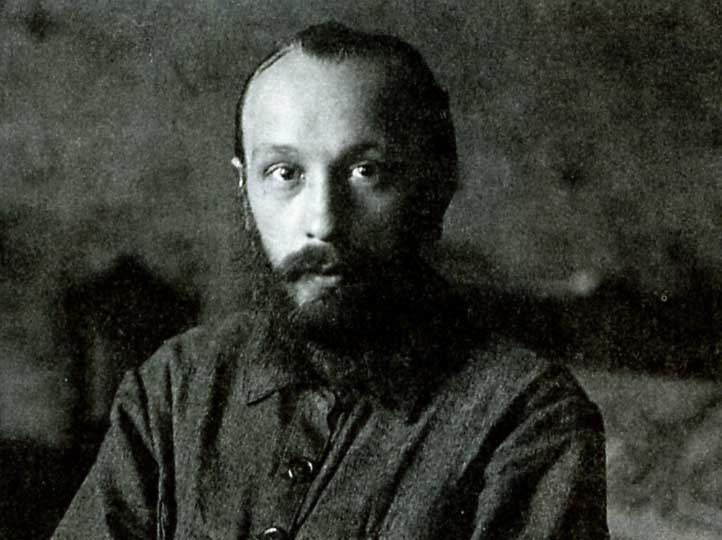Born in 1895, Mikhail M. Bhaktim is known to be a top-notch literary theorist of the 20th century. Known mostly for his bold through in the philosophy of language and novel theory, he has unpinned his concepts.
Though he was not a member of the Communist Party, his work referred him to be Marxist. Although his critique was formal, he was still entitled to be a poststructuralist and even a thinker of religion. His work was not much published until 1950 when he become one of the cult figures for the Soviet Union. From the 1970s to 1980s, he spread like wildfire from France to England and America respectively.
Who was Mikhail M Bakhtin?

- Born in Orel in Russia, Bakhtin got himself a degree in classics and philology in 1918 from St. Petersburg University. During that period, the University was the centre for debate on futurists, Formalists and Symbolists.
- Renowned figures like a Kantian thinker and F. F. Zelinski was his influence. Later in 1920, he shifted to Vitebsk, where he joined a circle followed by getting married. Though he returned to St. Peterbury in 1924. His current “Circle” has many renowned figures like biologist I. I. Kanaev and more.
- Published in 1929, his “Problems of Dostoevsky’s Art” speaks about “dialogism”. Back in the same year, he was sentenced to 10 years of imprisonment. It was due to his alleged association with the underground Russian Orthodox Church. He went to exile for 6 years in Kazakhstan. Finally, in 1936, he was a teacher at a College in Saransk. But threats and history did not let him secure the position for long.
- In 1938, he was infected with a bone disease that led to one leg amputation. Post-WWII, in 1949 he emerged on creating heat in the scholarly world. With the help of his friends, he got a Chair in the Department of Literature in Saransk.
His Major Works –
- Bakhtin translated most of his work into English. This includes 1965’s Rabelais and His World (trans 1968), 1990’s Early Philosophical Essays, The Dialogic Imagination: Four Essays (the 1930s; trans. 1981), Speech Genres and Other Late Essays (1986) and The Dialogic Imagination: Four Essays (the 1930s; trans. 1981).
- Towards a Philosophy of the Act (1919) was one of his most important early essays which did not get recognition until 1986.
- His other writings include Kantian in orientation, giving the idea of sophisticated accountability of intersubjective connection of humans in the world of language.
- Bakhtin gained interest in language through his Circle. Two of his books – Marxism and the Philosophy of Language and Freudianism was published under Valentin Voloshinov and not him. It all landed in a dispute.
- 1928’s The Formal Method in Literary Scholarship got published under Pavel Medvedev. The dispute triggered linguist V. V. Ivanov who recognized Bakhtin’s verses.
- Although Bakhtin did not want to get into the chaos somewhere it led through. Thus, these former writings shared the same ideas of the CIrcle.
Achievements –
His major achievement is in the radical philosophy of language and novel theory. His essay, “Discourse in the Novel” speaks about the integration of systematical theory and static schemes.
On the other hand, Bakhtin showcased the principal factor in the essay about overcoming the abstract “formal” approach and abstract “ideological” approach. According to Bhaktin, traditional stylistics slashed off social dimensions of artistic outcome. This further eliminated historical functionality and ideological struggles.
Back in 1920, Bakhtin suggested making moves that will showcase the traditional stylistic segments, not in correlation to novelistic discourse.
Explaining His Different Theories

Unity
It was segmented into –
- Styling of daily speeches.
- Direct Author Narratives
- A myriad of Artistic Speeches.
- The stylization of semi literary discourse (letters and diaries)
- Individual characters of speech
His idea about “heterogeneous stylistic unities” blended with the planned artistic gallery to define a novel. And that everything will fall into and under one category. The “novel” speak on a broader view, quite similar to “dialogic”.
Heteroglossia
To know about the above theory, understanding heteroglossia is important. It defined a single language segmented into multiple genes of interacting languages. They could eventually compete with one another. And now you know the reason behind the name.
Dialogism

Pretty difficult to explain, Dialogism deciphers different languages. Bakhtin entitled it as “primordial dialogism of discourse”. Just like language of religious discourse does not stagnant in ideological “neutrality”. On the other hand, it may rekindle factors of political discourse. Political discourse could probably enthuse maternal elements while religious one could disregard the idea of spiritual goals.
Bakhtin has a clearer way of putting up “dialogism”, “no living word relates to its object in a singular way.” In simpler words, our verse will be naturally dialogic. It has emerged as one voice in a dialogue already committed.
People living in Europe or America think of “democracy” as positive collaboration. But think of the political progress, history between political breaches and feudal economic. Thinking of “civilisation” will be probably an ideology of one’s freedom.
What according to Bakhtin was Unitary Language?
According to Bakhtin, there was no unitary language. It is all about putting limitations to overcoming heteroglossia. It is more like an imposition of understanding conversational and literary language. So when one is speaking of “a language” or “the language”, we are enforcing the ideology of impacting monologic intelligibility. The emphasis is on the constant change of languages that construct in “a language”.
When poetic domains were segmented, the artistic prose genre gained gravity. It was entitled to be the “current of centrifugal force”. During that period, poetry gained recognition as a national, cultural as well as political ground. All on the verbal ideological world.
It spoke about “languages” – individuals or myriads; dialects and later conversations of lyrics in different forms. Development of literature rose through street songs, anecdotes, and even folk sayings. No language claim. No particular genre. It rose as a centre of no language, no domain.
Heteroglossia is opposed to this format of growing literature. Mostly parodic but the ideology was dialogized. According to Bakhtin’s theory, we may consider his thesis towards literature to be narrow. Some poetry enthuses Heteroglossia while others are politically submissive. We have seen the pavement of conservation conception.
Bhaktin even used “poetry” and “novel” as metaphors. The former is a radical, challenging official discontentment and deployed by prose. The latter throws light on aesthetic and metaphysical vision. It accepts “the” world in the form of a conversation, series of connecting languages and unending dialogues. Thus, we may conclude that the truth is recognized from a consensus, through cultural theory. The outcome is a struggle – mark the beginning of language in itself.



